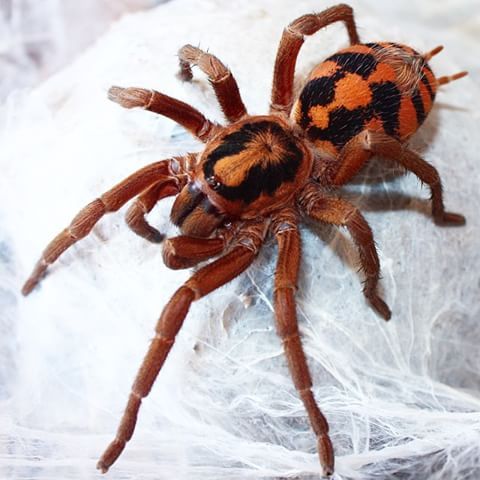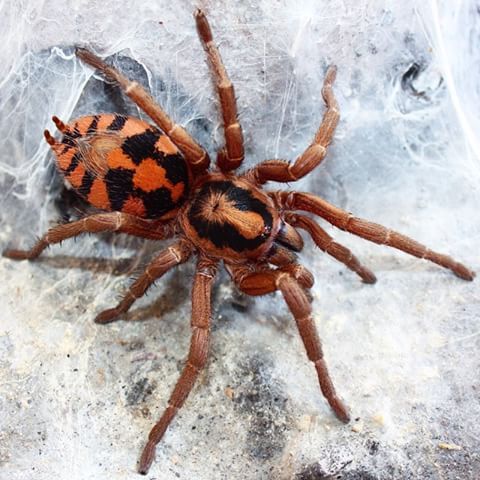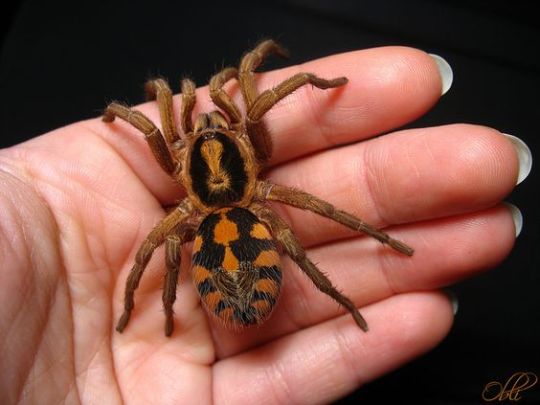#incorrect invertebrate skeletons
Explore tagged Tumblr posts
Text
Happy Halloween

It's INCORRECT SKELETON SEASON, folks!!
66K notes
·
View notes
Text
Learn Exactly How to Eliminate Ticks

Ticks are part of a team identified as arthropods, which are invertebrates with an external skeleton, segmented body, and joint appendages. Usually, ticks are located in grassy locations or bushes where they affix to the skin of a host, normally either people or pets, and also feed off the blood for nourishment. If bitten by a tick, it is crucial to clean the location and use antibiotic cream to decrease signs and symptoms.
Examples of common ticks consist of seed ticks, brown pet ticks, deer ticks, single celebrity tick, Pest Control BG and also the American canine tick. The brown dog is located throughout the USA and also mostly feeds upon pets while the deer one, likewise known as the black-legged tick, is usually located along tracks and also feeds on both human as well as animals. In pets, they trigger anemia, paralysis, as well as transfer other illness. The transmission of infection to the host is the outcome of the transfer of toxins from the tick's saliva right into the host. Ticks can increase in number quickly and also problem can occur with few noticeable indications, which makes it progressively tough to do away with ticks.
Tick control is essential for preventing an invasion in the home. The very best way to stop ticks from attaching to the skin and also entering your house is to use lengthy sleeves while strolling along wooded or verdant areas as well as applying insect repellent. Caulking any kind of cracks around the house, installing screens outside windows, relocating the yard regularly, cleansing cluttered locations around the residence, and doing away with excess timber are all valuable techniques for tick control.
Learning just how to kill ticks is likewise crucial. Diy methods work in removing and killing ticks. Forceps or tweezers work tools to pull ticks far from the skin. Once the tick is gotten rid of, wash it down the sink or purge it down the toilet. Outside the home, chemical therapies work in eliminating ticks. When getting rid of ticks becomes difficult or infestation takes place, get in touch with a specialist pest control expert to use specialist treatment and also eliminate ticks totally.
Ticks can end up being a parasite problem in your house and backyard. There are some means of eliminating ticks to do away with these troubles and well as stop them in the future.
For your pet maintain the advised tick therapies going. Don't wait also lengthy to offer your pet appropriate tick therapy. Make certain that they do not run in too high of turf or various other locations that ticks would certainly be.
Inside the house once the pet has been dealt with and washed, clean every little thing. You can sprinkle an item called diatomaceous planet on the carpeting as well as vacuum it up a few days later. The food grade variation should be pet secure however an animal who breaths in way too much can be affected. Maintain the pet far from the component of your home simply in case. Many barnyard animals consume this daily blended with their food so the animal ought to be fine.
Outdoors mow everything brief and also wonderful. Ticks want long, high grass where they can conceal. Spray the lawn with either diatomaceous earth or a much more poisonous spray. If you opt for the spray maintain your family pets out of the yard up until it's been dried for a few days. Consider if you have a rodent issue in the backyard. Rodents bring ticks. If you eliminate the ticks, but have rats, the ticks will certainly return. The rodent issue might be the residual source of a tick trouble which is something that you don't desire.
As a word of caution, if you are wanting to eliminate a tick that you removed your body, do not do that. Put this tick into a jar as well as seal it up just in situation you create a condition from it. This tick can be checked to learn if something is incorrect with it.
Examples of usual ticks consist of seed ticks, brownish canine ticks, deer ticks, only star tick, and also the American dog tick. When obtaining rid of ticks comes to be challenging or infestation occurs, get in touch with an expert pest control expert to use specialist treatment and also get rid of ticks entirely.
For your family pet keep the advised tick treatments going. Don't wait too lengthy to provide your pet dog correct tick treatment. If you kill the ticks, yet have rodents, the ticks will come back.
0 notes
Note
#look at his little rump!! #precious
Also happy halloween!! I hope all of those anatomically incorrect skeleton spider decorations out there are living their best lives. Is there a particular bug you think best captures the spirit of halloween, like a strikingly black and orange one or perhaps one with funky patterns? (I vote death's head hawk moth for its role in Silence of the Lambs)
Happy Halloween! The death's head hawkmoth is definitely a fav species and it's very spooky! I might have to go with the pumpkin patch tarantula, though, both for the name and the colors:



Cute :) Photos via ultimateexotics.co.za
#i LOVE the comment *I hope all of those anatomically incorrect skeleton spider decorations out there are living their best lives*#because yEAH#those crack me up but still look awesome#much like the birds with bone feathers and dogs and cats with bone ears#loracarol#frillish-is-watching#frillish is watching#halloween#onenicebugperday#cute buggy#invertebrate friends#me
592 notes
·
View notes
Text
New Post has been published on Biology Dictionary
New Post has been published on https://biologydictionary.net/tight-junctions/
Tight Junctions
Tight Junctions Definition
Tight junctions are areas where the membranes of two adjacent cells join together to form a barrier. The cell membranes are connected by strands of transmembrane proteins such as claudins and occludins. Tight junctions bind cells together, prevent molecules from passing in between the cells, and also help to maintain the polarity of cells. They are only found in vertebrates, animals with a backbone and skeleton; invertebrates have septate junctions instead.
Function of Tight Junctions
Tight junctions have several different functions. Their most important functions are to help cells form a barrier that prevents molecules from getting through, and to stop proteins in the cell membrane from moving around. Tight junctions are often found at epithelial cells, which are cells that line the surface of the body and line body cavities. Not only do epithelial cells separate the body from the surrounding environment, they also separate surfaces within the body. Therefore, it is very important that the permeability of molecules through layers of epithelial cells is tightly controlled.
If molecules are blocked by tight junctions and physically unable to pass through the space in between cells, they must enter through other methods that involve entering the cells themselves. They could pass through special proteins in the cell membrane, or be engulfed by the cell through endocytosis. Using these methods, the cell has greater control over what materials it takes in and allows to pass through. However, in endothelial cells, certain proteins must be kept on certain sides of the cell. The apical, or outside layer, of the sheet of cells contains proteins that only let certain substances pass through. The basal, or inside layer, is where cells let molecules pass through them by expelling them from their membrane in a process called exocytosis. Exocytosis also relies on specific proteins in order to work correctly. Tight junctions keep the correct proteins on the correct sides of the cell in order for these functions to occur. This also helps maintain the polarity of cells.
Another function of tight junctions is simply to hold cells together. The branching protein strands of tight junctions link adjacent cells together tightly so that they form a sheet. These strands are anchored to microfilaments, part of the cell’s cytoskeleton that is made up of long strands of actin proteins. Microfilaments are located inside the cell, so the combination of microfilaments and sealing strands anchors the cells together from the inside and the outside.
Structure of Tight Junctions
This diagram depicts a tight junction between cells and also provides examples of proteins found in the junction.
Tight junctions are a branching network of protein strands on the surface of a cell that link with each other throughout the surface of the membrane. The strands are formed by transmembrane proteins on the surfaces of the cell membranes that are adjacent to each other.
There are around 40 different proteins at tight junctions. These proteins can be grouped into four main types. Transmembrane proteins are wedged in the middle of the cell membrane and are responsible for adhesion and permeability. Scaffolding proteins organize transmembrane proteins. Signaling proteins are responsible for forming the tight junction and regulating the barrier. Regulation proteins regulate what proteins are brought to the cell membrane in vesicles.
Claudins and occludins are the two main types of proteins present at tight junctions, and they are both transmembrane proteins. Claudins are important in forming tight junctions, while occludins play more of a role in keeping the tight junction stable and maintaining the barrier between cells that keeps unwanted molecules out.
Other Cell Junctions
Tight junctions are one of three main types of junctions in vertebrate cells. The other two types are gap junctions and anchoring junctions. Gap junctions, also known as communicating junctions, are channels in cells that let adjacent cells communicate with one another without having to send molecules through the extracellular fluid surrounding the cell. Connexin proteins form the channel, which has a central pore called a connexon that molecules can pass through. Anchoring junctions hold cells together with anchoring proteins such as catenins and cadherins. The cell’s cytoskeleton is tethered to proteins that link adjacent cells.
Related Biology Terms
Anchoring junction – A type of cell junction in which cells are connected by a mass of proteins.
Gap junction – A type of cell junction that allows adjacent cells to exchange molecules.
Cytoskeleton – A network of protein filaments that extends throughout the cell.
Epithelial cells – Cells that line the interior surfaces of organs and are also found on the surface of the body.
Quiz
1. Which animal does not have tight junctions in between any of its cells? A. Cat B. Squid C. Bird D. All animals have tight junctions between some of their cells.
Answer to Question #1
B is correct. Squids are invertebrates, so they do not have cells with tight junctions. They do, however, have similar cell junctions called septate junctions. Only vertebrates have tight junctions in between certain cells.
2. Why is it important for tight junctions to keep all cell membrane proteins in place? A. Different processes occur on the apical and basal sides. B. It maintains polarity. C. If the proteins move, they may let in different molecules. D. Both A and B
Answer to Question #2
D is correct. Tight junctions essentially separate the apical and basal sides of epithelial cells, and this also maintains polarity. The apical and basal sides of epithelial cells have different functions; the apical side may allow molecules to enter the cell through special protein channels while the basal side performs exocytosis to excrete molecules. These proteins must be kept on specific sides in order to preserve functioning on each side. Choice C is incorrect because if a protein did move across the membrane, its function would not change; it just might not have access to the molecules that are supposed to pass through it or interact with it.
3. What is the role of scaffolding proteins? A. To form the tight junction B. To regulate the proteins that are brought to the cell membrane C. To maintain adhesion and permeability D. To organize transmembrane proteins
Answer to Question #3
D is correct. Scaffolding proteins organize transmembrane proteins, which are the main proteins involved in tight junctions. Claudins and occludins are the two main proteins in tight junctions, and they are both transmembrane proteins.
0 notes
Text
Those Sponges Are Actually Bryozoans - #365papers - 2017 - 6 by Penny has been published on Paleopix
New Post has been published on http://paleopix.com/blog/2017/01/26/those-sponges-are-actually-bryozoans-365papers-2017-6/
Those Sponges Are Actually Bryozoans - #365papers - 2017 - 6
#365papers for January 6, 2017
Muricy, Domingos, Tavora, Ramalho, Pisera, and Taylor, 2016, Hexactinellid sponges reported from shallow waters in the Oligo-Miocene Pirabas Formation (N Brazil) are in fact cheilostome bryozoans: Journal of South American Earth Sciences, v. 72, p. 387-397.
What’s it about?
This paper is about some incorrectly identified fossils from Brazil. Sponges are animals that survive by filter feeding. Hexactinellid sponges have a skeleton made of glass and are only found at great depths, so it was interesting with previous authors found hexactinellid sponges in rocks deposited in shallow waters.
The authors of this paper took the sponge fossils and looked at them closely under a scanning electron microscope and realized that the earlier identification was incorrect and that these were in fact bryozoans, which are colonies of tiny filter-feeding organisms that can live in a structure that is shaped similar to that of sponges.
Why does it matter?
It’s easy to mis-identify a fossil. This paper shows the importance of applying newer technology to study fossils that had been collected even a hundred years ago.
This paper also showed, likely to the relief of some researchers, that there are not any shallow water hexactinellid sponges. Whew.
Why did I read this?
This semester I’m teaching a course that involves invertebrate paleontology. Bryozoans are difficult for me to teach about because they are so tiny, so on the day I found this paper, I was looking for papers on bryozoans to share with my class. Not sure yet if this one will make the cut…
0 notes